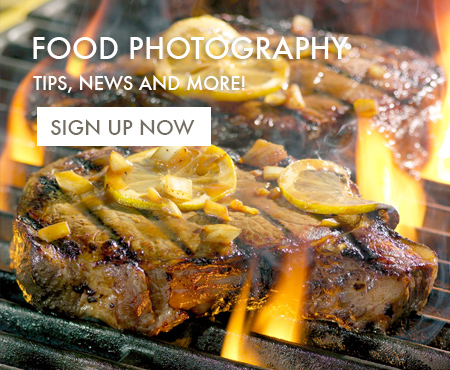 In professional food photography, it’s the little things that make the difference…
In professional food photography, it’s the little things that make the difference…
I can’t tell you how many times novice photographers have asked me the question “ What’s the best way to light food?”, and I always reply, it depends… And it does. It depends on what way the food faces in the photo, what else is in the frame, the food itself, and about a hundred other factors.
The pasta photo above is a great example of what a difference good lighting makes in food photography. I’m not saying this is a really great portfolio shot, even though I really do like it, but I am saying that the lighting is very good. IMHO :o)
One of the first things you realize as a professional food photographer, is that the viewer’s eye usually goes to the brightest thing in the composition, and in food photography, that’s usually the plate. One way to lessen that affect is to keep the main light low, so that the top of the plate doesn’t get too much light and get too bright, making it the brightest thing in the photo. Keeping the light low also has the added benefit of adding more texture to the food, but “scraping” the light across the surface of any horizontal food surface. With this mound of pasta, that’s not really the case, but if I were shooting something flat like steak or chicken, then you’d really notice the added texture.
Notice how the rounded edge of the plate is actually brighter than the top of the plate and how you can see the dip in the plate’s handle area. I think this adds interest to the shot, while lessening the brightness of the white plate. It’s subtle difference to most viewers, but to the trained eye, it’s a huge one… What do you think?



I think it makes a huge difference to the overall image. I also love the diagonal angle of the wood placemat and the tones – gorgeous!